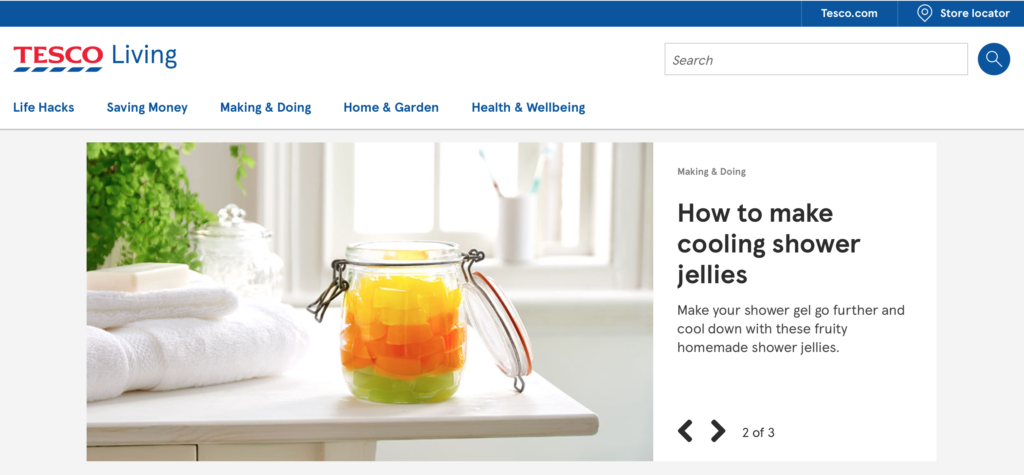As marketers we have an increasing appreciation of the power of our websites. Think back a few years to when most websites were static and just provided one way information – which was often out of date – and no interactivity.
Whilst communicating key messages and promoting the organisation are both still critical elements of a good website, most effective websites now offer customers online access to their products and services and also various means of interacting with the organisation.
One of the problems this brings is that of overcrowding. Websites grow and evolve with changing circumstances, and the site map needs constant readjusting to make sure everything hangs together. But what do you do if you need to feature something special on your website, perhaps on a temporary basis? Where do you put it?
One solution is to create a different website landing page for a specific purpose, for example, to promote a new product or service, or feature a special offer. To boost its SERP ratings, the landing page can be named and optimised to feature top ranking keywords and include relevant topics about the product or service.
It can also include opportunities for users to interact with your brand, for example downloading items, signing up for either a free trial or newsletter, or buying a product or service. A specific landing page can be extremely effective at boosting conversion.

But sometimes you need more scope and flexibility than just a landing page. In this case you need to consider a microsite.
What is a Microsite?
A microsite is an individual web page – or cluster of web pages – set up either as a separate domain or as a subdomain. The usual goals of a microsite are firstly to tell a specific story and secondly to create an experience around that story – an experience that is often targeted at a specific audience group.
The advantage of a microsite over a landing page is that its expanded size enables you to tell the whole story of your product or service. Having multiple pages to browse through also encourages visitors to stay longer on your site, lowering your bounce rate and increasing their level of interaction with your brand.
Microsite can be used effectively for a variety of different objectives such as:
highlighting a specific campaign eg Bolthouse Farms campaign to change the way people think (and post) about healthy food – Urwhatupost
target specific buyer personas eg Tesco Living, which offers its customers a range of tips and life hacks to save time and make life easier.
telling a short story eg how the fashion house Chanel has developed over the years.
inspiring a specific call-to-action eg the ever popular ElfYourself microsite – resurrected on an annual basis each autumn – enables you to use the ElfYourself app to become the star of a personalised video featuring your photos on holiday dancing elves which you can then share via email or post on Facebook.

But if you do decide to create a microsite, what are some of the things to watch out for? You need to consider that a microsite will need hosting capacity, domain registration fees (a microsite should have its own dedicated domain or subdomain), page design and content writing. So how can you ensure that your microsite is effective – and worth the time and investment to create it?
Here are our Top Five Tips for microsites:
QUALITY DESIGN
Don’t be tempted to cut corners Just because your microsite may have a limited shelf life. In fact the opposite applies: for maximum effectiveness, your microsite should be high quality and easy to navigate. It also needs to be visually compelling and distinctive, whilst also incorporating your brand so that there is a strong association between the two.
ENGAGING CONTENT
The main aims of the microsite should be to inform, entertain and benefit users. Your content needs to be compelling and engaging so that users stay with the microsite long enough for its message to win through. Again, don’t skimp on this but spend time creating content that users will want to interact with.
CALL-TO-ACTION
To gain maximum benefit from your microsite it needs to have a clear and convincing call-to-action. Whether this is a case of encouraging visitors to submit their information – or to follow one or more paths through the site that will subtly move them through the sales funnel – there needs to be a purpose to your site that will be of benefit to you.
CLEAR SUCCESS METRICS
Your microsite needs to incorporate an analytics solution to ensure that significant metrics can be tracked. You need to know the numbers of visitors and how successfully they are providing you the information or following the intended journeys. As with any other website, if things are not working as you had hoped then you can make changes to your microsite accordingly.
MARKET IT WELL!
No matter how good your microsite is, if people do not know it is there they will not visit it. Most marketers – whether in a business or a digital marketing agency – would heavily promote a microsite as part of the paid advertising of a marketing campaign as a matter of course. But other means of promotion such as social media and paid search ads should also definitely be considered.

A final word. Most microsites are – by their very nature – time-limited. You need to think ahead what to do with them when their time is done. Good microsites will be missed when they are gone, for example the brilliant political spoof microsite Fu2016.com used to introduce the latest season of House of Cards.
When retiring your microsite you therefore need to alert users ahead of time. You also need to redirect its link to an appropriate place rather than a 404. If you have used a dedicated domain it is also a good idea to keep this registered indefinitely in case you want to use it again later and also so that it doesn’t get taken by another company or brand that may then cause confusion.
Have fun with your microsites, and do send us examples if you would like us to consider featuring them here in a future article.

